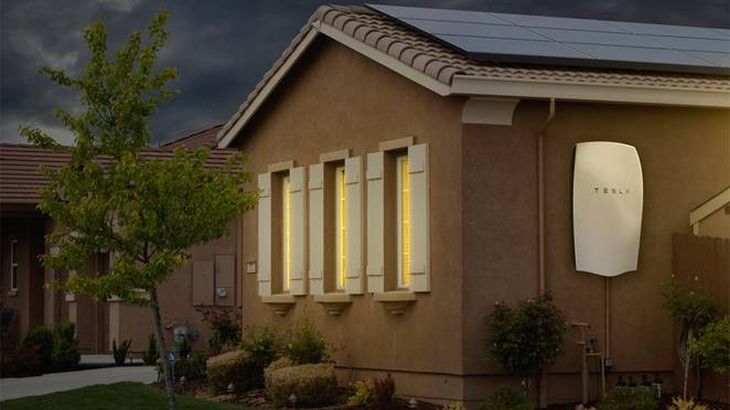In May, when Tesla Motors announced its new battery product to vast media buzz, the talk was all about people putting batteries in their solar-powered homes, and thereby becoming that much less reliant on the grid.
But there was always another and perhaps even bigger side of the story — the idea that very large scale batteries or battery packs could help out the grid itself by storing large amounts of solar energy for use in the evening or at night. The ultimate effect might be to displace electricity generated from coal or natural gas, and convert an inherently “intermittent” renewable energy source — solar — into a more constant one.
So is it happening? The answer seems to be yes — 2015 has seen several key announced, completed, or experimental grid-scale projects pairing batteries and solar photovoltaic panels.
“In the last few months we’ve seen the frequency of these project announcements go up,” says Ravi Manghani, an energy storage analyst with GTM Research. Manghani adds that while there have been pioneering initiatives and pilot projects prior to now, it do appear that solar plus storage technology is beginning to arrive.
Indeed, SolarCity — which is chaired by Tesla CEO Elon Musk — has just announced plans to bring precisely this combo to Hawaii, a state that continues to lead the way when it comes to the adoption of solar and batteries, thanks to its towering electricity costs, which are the highest in the nation.
SolarCity and the Kaua’i Island Utility Cooperative jointly announced last week that they’ve entered into a solar power purchase agreement in which SolarCity will provide 20 years of power from a 52-megawatt-hour battery installation that will be able to send as many as 13 megawatts of electricity to the island’s grid. The battery will draw power from an accompanying solar array.
The biggest news is when the energy would be supplied: the evening. “What makes this exciting is basically that it’s dispatchable solar that will be available at night,” says Peter Rive, the chief technology officer of SolarCity. The system is slated to be running by the end of 2016, said Rive, and will likely use Tesla batteries for the energy storage component.
